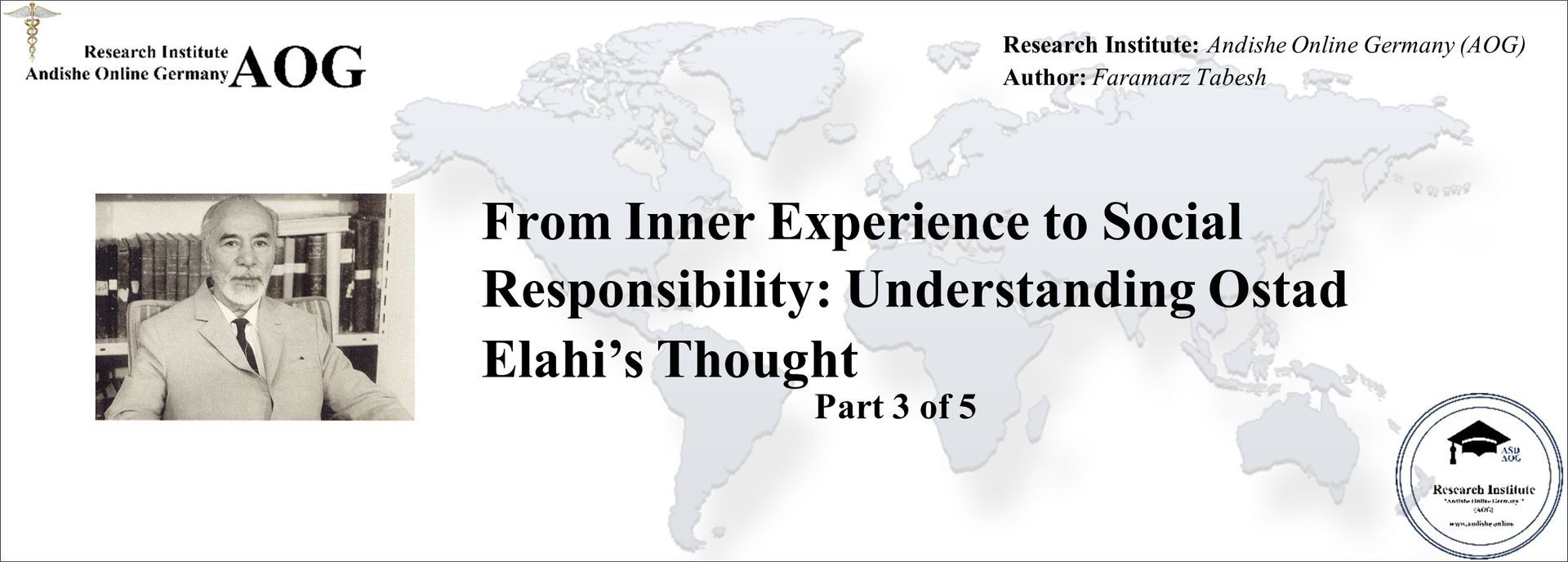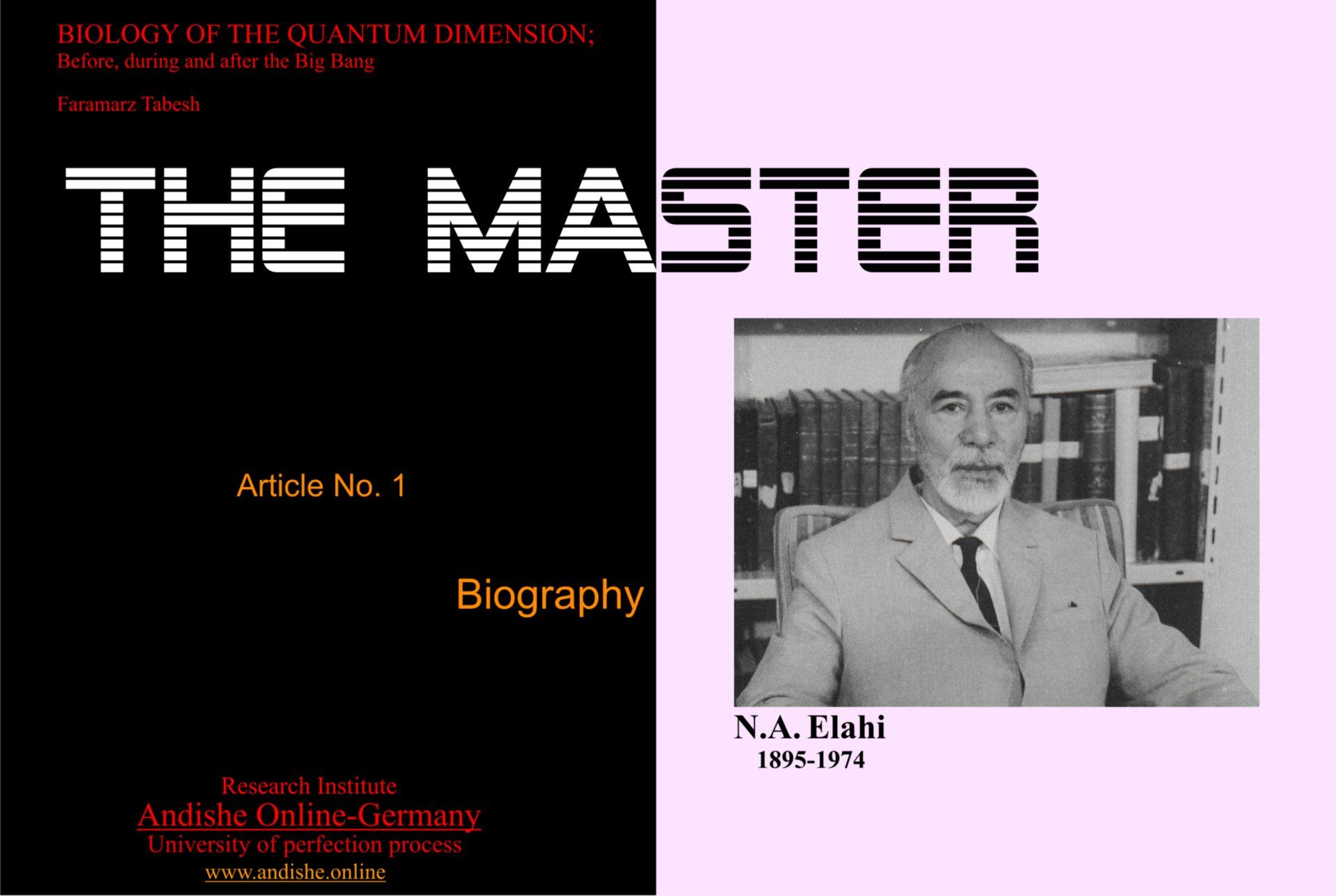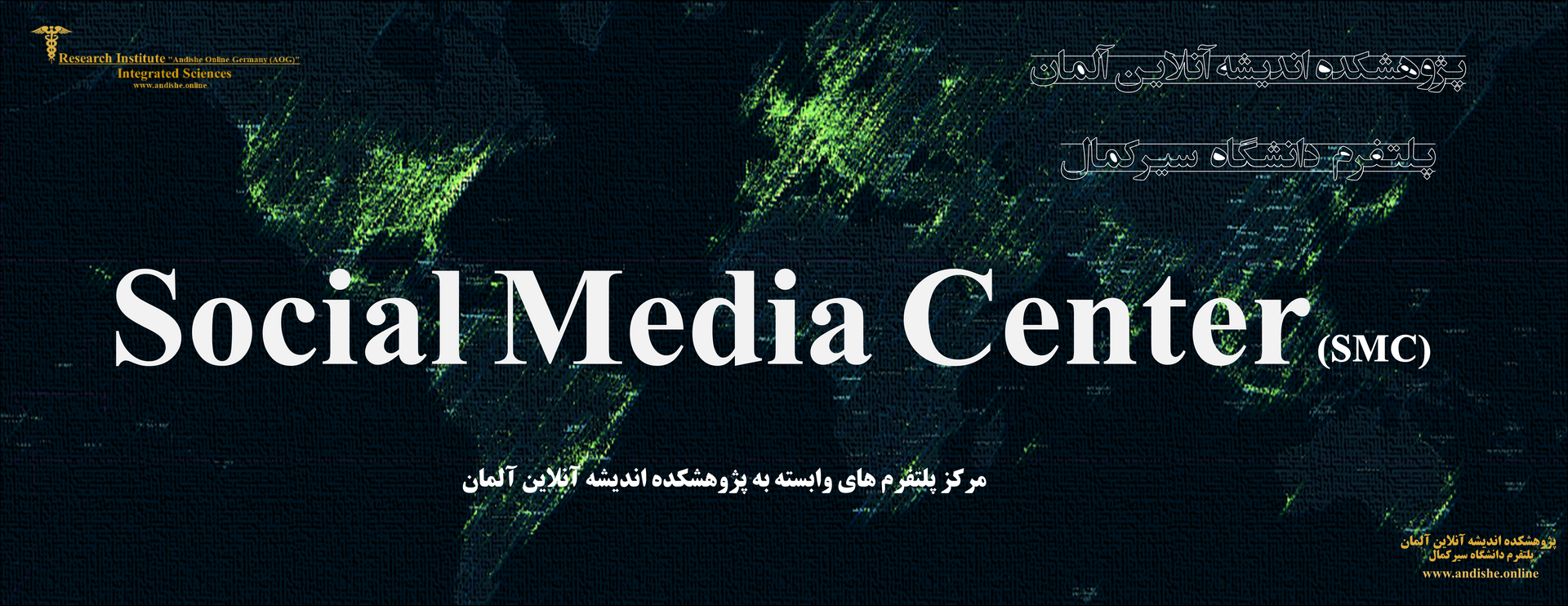

Paper Information
Research Institute: Andishe Online Germany (AOG)
Author: Faramarz Tabesh
This research is presented in five parts (Part I to Part V) and is available in English, German, Persian, French, Spanish, and Arabic.
Section: Excerpt from "Biography"
Subject Area: Interdisciplinary Research – Human Consciousness, Transpersonal Psychology, and Spiritual Development
Original Language: Persian (Farsi)
Persian Version (Part 3) – Release Date : Edition 18 / 2018
English Version – Initial Release: Edition 31 / 2020
English Version – Revised on: May 20, 2025
Translation: Translated into English and German by the author
Archival Code:
fd,ävhtd_nsjh,vnihd hsjhn hgid_hkägdsd
Part 3 of 5
Philosophers and Scientists in Search of Truth

Part No.1
Biography of Ostad Elahi
Part No.2
The divine discoveries
Part No.3
Philosophers and scientists in search of truth
Part No.4
Quantum mechanics
Elementary particle physics
The metaphysical thoughts
Part No.5
Ostad Elahi solved the riddle
..................................................
Integrated sciences
Article No.6
3 quantum dimension of matter
3.1 Tokyo experiment
A deeper look at human history reveals that throughout time, curious and inquisitive people have always sought to understand the origin of existence through various approaches.
Religious philosophers like
Thales¹ focused solely on the spiritual dimension, while non-religious thinkers such as
Jean-Paul Sartre² emphasized only the material or observable aspects of human beings in their reflections on the nature of humanity.
Modern science has made remarkable progress, solving countless problems that once made life on Earth difficult. It has given us advanced technology—cars, airplanes, spaceships, satellites, skyscrapers, household appliances, breathable-soled shoes, and even frozen food.
Yet, despite these advancements, people do not necessarily feel happier, and a widespread longing for the
"good old days" still persists.
Over the decades, science has evolved into numerous specialized disciplines. Some religious scientists have drawn upon scientific discoveries to demonstrate the connection between the two dimensions of human existence—soul and matter—which, though interactive, remain fundamentally distinct.
The earliest philosophical reflections on this subject are believed to involve
atomic theory³, which originated in India in the 6th century BCE. The
Nyaya⁴ and
Vaisheshika⁵ schools developed detailed theories on how atoms combine to form complex structures.
Around 450 BCE,
Democritus⁶ coined the term
atomos⁷, meaning
“indivisible.” This concept, attributed to Democritus and his teacher
Leucippus⁸, continues to shape scientific discourse today.
According to
Pliny the Elder⁹, a Persian scholar named
Ostanes¹⁰—said to have been a teacher to Greek philosophers such as Democritus and
Plato¹¹—also developed atomic theories around 400 BCE.
Following the Middle Ages
(6th–15th centuries), two major developments profoundly influenced the scientific world.
The first was the birth of
René Descartes¹² in 1596 in La Haye en Touraine, France. Descartes would become a prominent philosopher, mathematician, and scientist. Around four decades later, he introduced a revolutionary idea: that there must be a universal method for discovering truth. While the idea itself wasn’t entirely new, Descartes’ formulation gave it fresh significance.
Humanity has long sought answers to fundamental questions: How did the universe originate? Why do humans exist? What is our role on Earth? And what happens after death?
Descartes’ most influential contributions were in analytical geometry and epistemology, especially his concept of methodological doubt:
“The common assumption that scientific knowledge stems from sensory perception and thought must be questioned. Neither source is fully reliable. Our senses can deceive us—not merely due to faulty perception, but because our previous experiences, ingrained in our physical constitution, shape how we interpret new ones. We impose the past onto the present. Yet unchecked reasoning is no safer, as an ‘evil demon’ might mislead the mind into forming false conclusions. Therefore, everything must first be doubted.”—
(Descartes)( Stanford Encyclopedia of Philosophy Descartes' Epistemology . Meditations on First Philosophy PDF.)
With this critical approach and his scientific ideas, Descartes challenged many of the weaknesses in the prevailing science and philosophy of his era—at least theoretically. Although later philosophers like Immanuel Kant¹³, Blaise Pascal¹⁴, and G.W.F. Hegel¹⁵ criticized or revised his theories, Descartes is still considered one of the founding figures of early modern rationalism.
Eight years before Descartes’ death, another transformative thinker of the Renaissance was born:
Isaac Newton¹⁶, in Lincolnshire, England.
Newton was a physicist, chemist, astronomer, mathematician, and philosopher. In classical mechanics, he formulated the three fundamental laws of motion and introduced the concepts of absolute time, absolute space, and action at a distance. His work laid the cornerstone of classical physics and mechanics.
Although it is difficult to establish a direct influence, it is likely that Newton’s work was shaped, at least in part, by Descartes’ ideas. Once the laws and principles of classical mechanics were embraced by academic institutions, a new scientific worldview emerged—one rooted in both
Cartesian¹⁷ and
Newtonian¹⁸ thought. This perspective viewed existence as a vast, mechanistic system initiated by God, with humans functioning as mere components within it. Known as the
Descartes–Newton paradigm¹⁹, this framework dominated scientific thinking for nearly three centuries, until the early 1960s.
In my view, this paradigm impeded meaningful collaboration between philosophy and the natural sciences. The two disciplines gradually diverged, each following its own trajectory.
Despite their transformative contributions, neither Descartes nor Newton could explain the ultimate purpose of existence, nor could they adequately describe the origin and nature of life—or the non-material dimensions of reality.
Driven by humanity’s enduring quest for answers, many philosophers, physicists, and biologists have sought to shed light on the mystery of existence. Each has revealed fragments of truth, yet none—not even Descartes—has succeeded in assembling the full picture, particularly in scientifically and coherently explaining the immaterial aspects of the human being, such as the quantum nature of matter.
In pursuit of this understanding, scientists have investigated matter in its various forms, attempting to discern its functionality and essence. Paradoxically, the deeper they delved into the structure of matter, the more elusive its underlying source became. As new interdependent variables emerged, the need for clearer concepts and more precise analytical tools intensified.
To address these complexities, scientists required broader terminology, novel expressions, and advanced mathematical frameworks. Consequently, science evolved—abandoning outdated models and giving rise to entirely new disciplines. One revolutionary development was the introduction of the concept of
quantum²⁰, derived from the Latin word meaning
“how much,” referring to an unimaginably small unit. This insight revolutionized modern science.
The realization that the laws governing subatomic particles differ fundamentally from those in everyday experience has led many researchers to conclude that a unified framework is needed—one capable of integrating both material and non-material dimensions of existence. Such a framework could offer deeper insight into the structure of the universe and the true nature of reality.
End of Article 3 of 5

Faramarz Tabesh
Archiving Code for This Part:
fd,ävhtd_ tghsti , nhkalknhk nv #d prdrj_ hkägdsd
Part 4 of 5: Quantum mechanics - Elementary particle physics - The metaphysical thoughts
References:
1. Guthrie, W. K. C. (1962). A History of Greek Philosophy, Volume 1. Cambridge University Press.
2. Flynn, T. (2006). Existentialism: A Very Short Introduction. Oxford University Press.
3. Dalton, J. (1808). A New System of Chemical Philosophy.
4. Potter, K. H. (1977). The Encyclopedia of Indian Philosophies. Princeton University Press.
5. Radhakrishnan, S., & Moore, C. A. (1957). A Sourcebook in Indian Philosophy. Princeton University Press.
6. Barnes, J. (1982). The Presocratic Philosophers. Routledge.
7. Frede, M. (1999). The Cambridge Companion to Early Greek Philosophy. Cambridge University Press.
8. Curd, P. (1998). The Legacy of Parmenides. Princeton University Press.
9. Pliny the Elder. (1938). Natural History (H. Rackham, Trans.). Harvard University Press.
10. Daryaee, T. (2012). The Oxford Handbook of Iranian History. Oxford University Press.
Academic References on Pliny the Elder’s Accounts of Iran and the Iranian Philosopher Ostanes:
10.1- Pliny the Elder. Natural History, Book 30, Sections 2.3–10. Translated by John Bostock and H.T. Riley. London: Taylor and Francis, 1855. Also available at The Latin Library.
10.2- Encyclopaedia Iranica. “Ostanes.” https://iranicaonline.org/articles/ostanes
10.3- Wikipedia contributors. “Ostanes.” Wikipedia: The Free Encyclopedia. https://en.wikipedia.org/wiki/Ostanes
10.4- TheCollector. “A Guide to Pliny the Elder’s Natural History.” https://www.thecollector.com
10.5- Zoroastrian Heritage Organization. “Ostanes: Magus and Philosopher.”
10.6- Occult Research Institute. “Ostanes the Alchemist: A Historical Profile.”
10.7- Sezgin, Fuat. Geschichte des Arabischen Schrifttums, Vol. 4: Alchemy and Chemistry. Leiden: Brill, 1971.
10.8- Chemie-Schule. “Ostanes.” Educational Chemistry Database. https://www.chemie-schule.de
10.9- Ullmann, Manfred. Die Natur- und Geheimwissenschaften im Islam. Leiden: Brill, 1972.
11. Cornford, F. M. (1935). Plato’s Theory of Knowledge. Routledge.
12. Cottingham, J. (1992). Descartes: A Very Short Introduction. Oxford University Press.
13. Guyer, P. (2006). Kant. Routledge.
14. Krailsheimer, A. J. (1966). Blaise Pascal. Charles Scribner's Sons.
15. Pinkard, T. (2000). Hegel: A Biography. Cambridge University Press.
16. Westfall, R. S. (1980). Never at Rest: A Biography of Isaac Newton. Cambridge University Press.
17. Gaukroger, S. (1995). Descartes: An Intellectual Biography. Oxford University Press.
18. Cohen, I. B. (1980). The Newtonian Revolution. Cambridge University Press.
19. Cohen, I. B. (1985). The Birth of a New Physics. Norton.
20. Feynman, R. P. (1985). QED: The Strange Theory of Light and Matter. Princeton University Press.
Quantum is a Latin term meaning "how big" or "how much."
Audio format article for the visually impaired (V1)
"V2 is not available."






